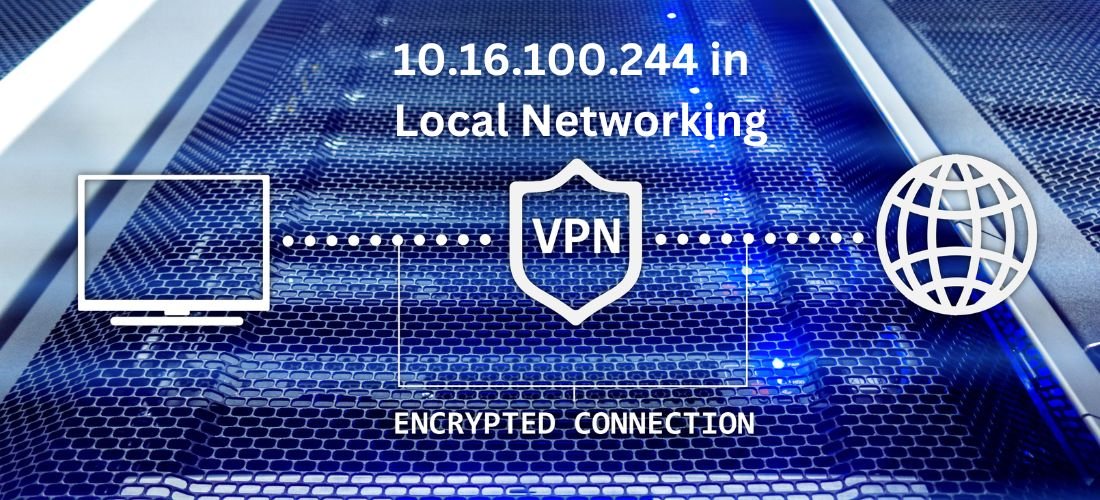
10.16.100.244 in Local Networking
In today’s digital age, understanding your network is more crucial than ever. Whether you’re a tech enthusiast or just someone trying to make sense of the devices in your home, delving into local networking can open up a world of possibilities. One particular IP address you might come across is 10.16.100.244—a seemingly ordinary number that plays an essential role in how devices communicate within a network.
But what exactly does this IP address mean? Why is it significant for local networking? If you’ve been curious about its applications and benefits, you’re not alone. Many people are eager to grasp the intricacies of IP addresses and how they function behind the scenes, connecting everything from smart TVs to printers seamlessly.
Join us as we explore the ins and outs of 10.16.100.244—its uses, advantages, potential pitfalls, and much more! Get ready to demystify local networking one byte at a time!
Understanding IP Addresses and Local Networking
IP addresses are the backbone of local networking. They serve as unique identifiers for devices connected to a network, allowing them to communicate effectively. Think of an IP address like a home address—it tells data where to go.
Local networking refers specifically to connections within a limited geographical area, such as your home or office. It enables multiple devices, from computers and smartphones to printers and smart appliances, to share resources and access the internet seamlessly.
Every device on a local network has its own IP address. This identification helps routers direct traffic accurately, ensuring that data reaches its intended destination without confusion.
By understanding how these addresses work, you can troubleshoot issues more easily and optimize your network’s performance for all connected devices.
Read Also: Kennedy Funding Ripoff Report | What is Thriftyevents.net
What is 10.16.100.244?
10.16.100.244 is a private IP address commonly used in local area networks (LANs). It falls within the range designated for private use, meaning it’s not routable on the public internet.
Devices connected to a network often receive IP addresses like this one through DHCP (Dynamic Host Configuration Protocol). This address helps identify devices uniquely within that specific network.
Typically, you’ll find 10.16.100.244 assigned to routers or servers managing local traffic and facilitating communication among various devices.
It’s particularly popular in organizations where multiple internal systems need seamless interaction while maintaining security by keeping sensitive data off the internet.
This IP can also serve as a gateway for other devices, acting as an intermediary between them and external networks when necessary.
Common Uses of 10.16.100.244 in Local Networking
10.16.100.244 is commonly utilized in various local networking environments, particularly within private networks. It often serves as a default IP address for routers and network devices, providing a simple way to manage connections.
Businesses frequently use it to streamline communication between computers and printers on the same network. This helps ensure efficient data transfer without unnecessary delays.
In educational institutions, 10.16.100.244 can be found powering intranet services where students access resources seamlessly.
Moreover, home users may configure this address for smart devices like security cameras or IoT gadgets, enhancing their connectivity and control over personal networks.
It also plays a vital role in troubleshooting scenarios by allowing IT professionals to quickly identify issues within local setups without affecting external communications.
Benefits of Using 10.16.100.244 in Local Networking
Using 10.16.100.244 in local networking offers various advantages that can enhance your network’s efficiency.
This IP address is typically part of a private subnet, making it ideal for internal communications within organizations. It helps maintain security by keeping sensitive data away from the public internet.
Another significant benefit is performance optimization. By utilizing this specific IP, devices within the same network can communicate faster and with lower latency, ensuring smoother operations for applications reliant on real-time data exchange.
Moreover, implementing 10.16.100.244 allows for easier management and monitoring of devices connected to the network. Network administrators can quickly identify issues or make adjustments without impacting external connectivity.
Using this address simplifies subnetting and segmentation strategies, enabling better organization of resources based on operational needs while enhancing overall control over data traffic flow.
Potential Risks and Issues with 10.16 .100 .244 in Local Networking
Using 10.16.100.244 in local networking can introduce several potential risks and issues that users should be aware of.
One major concern is network security. If this IP address is left unprotected, it may become a target for unauthorized access or cyberattacks. Attackers often scan networks looking for vulnerable endpoints.
Another issue arises from conflicts with existing devices on the network. If another device inadvertently shares the same IP address, it can lead to connectivity problems, making it difficult for users to maintain a stable connection.
Inconsistent configuration settings can also pose challenges when using 10.16.100.244 across different devices or systems within a local area network (LAN). This inconsistency might hinder communication between devices.
Improper management of DHCP settings could result in clients not being assigned appropriate addresses, leading to disruptions in service and accessibility issues for connected users.
Alternatives to Using 10.16 .100 .244
When exploring alternatives to 10.16.100.244, there are several options that cater to different networking needs.
One popular choice is the IP address range of 192.168.x.x. This range is widely used for local networks and provides a more familiar setup for many users.
Another option is the 172.16.x.x subnet, which offers flexibility for larger organizations requiring multiple subnets within a private network.
For those seeking simplicity in configuration, using DHCP can alleviate manual assignment issues while allowing devices to connect seamlessly without fixed IPs.
Additionally, IPv6 addresses present an innovative alternative with plenty of unique addresses available, accommodating future networking demands effortlessly.
Selecting the right alternative depends on your specific requirements and network architecture preferences. Exploring these options ensures you find a fitting solution tailored to your environment’s needs.
How to Configure and Set Up 10
Configuring 10.16.100.244 requires a few straightforward steps to ensure smooth local networking.
First, access your router’s settings by entering its IP address into a web browser. Log in with the admin credentials provided on the device or in its manual.
Once inside, navigate to the DHCP settings where you can assign 10.16.100.244 as a static IP for your desired device.
Make sure that this IP is not within the DHCP range to avoid conflicts with other devices on your network.
Next, configure any additional settings such as subnet mask (usually 255.255.255.0) and gateway details if necessary.
After saving these changes, reboot both your router and the connected device for optimal results.
This process ensures that your chosen device will always have consistent access through 10.16.100.244 without interruptions from dynamic addressing issues.
Read Also: Taipei Car Rental Gharry | 1603605300 A Detailed Examination
Conclusion
Understanding the nuances of 10.16.100.244 can significantly enhance your local networking experience.
This specific IP address plays a vital role in various network configurations and setups.
Being aware of its benefits, potential risks, and alternatives allows for informed decisions when it comes to optimizing your network.
Staying informed about such technical details is crucial for both personal and professional settings.
As technology continues to evolve, so does the importance of understanding local networks.
Whether you are setting up a home office or managing a larger organizational system, knowledge is power.
FAQs:
What is the significance of 10.16.100.244 in local networking?
10.16.100.244 is a private IP address commonly used within local networks to identify devices, routers, or servers.
Can I use 10.16.100.244 on my home network?
Yes, you can use it if it’s available and not already assigned to another device in your network.
How do I find out if 10.16.100.244 is being used on my network?
You can check your router’s DHCP client list or run a command prompt/network scan tool to see connected devices.
Are there any security concerns with using 10.16.100.244?
Like all private IP addresses, as long as appropriate security measures are taken (like firewalls), it typically does not pose significant risks.
Can I access the internet through 10 .16 .100 .244?
Not directly; this address operates within a private network and requires NAT (Network Address Translation) for internet connectivity.
What should I do if there’s an issue with 10 .16 .100 .244 on my network?
Try restarting your router or checking configuration settings to ensure no conflicts exist with other devices’ IPs within the same range.



